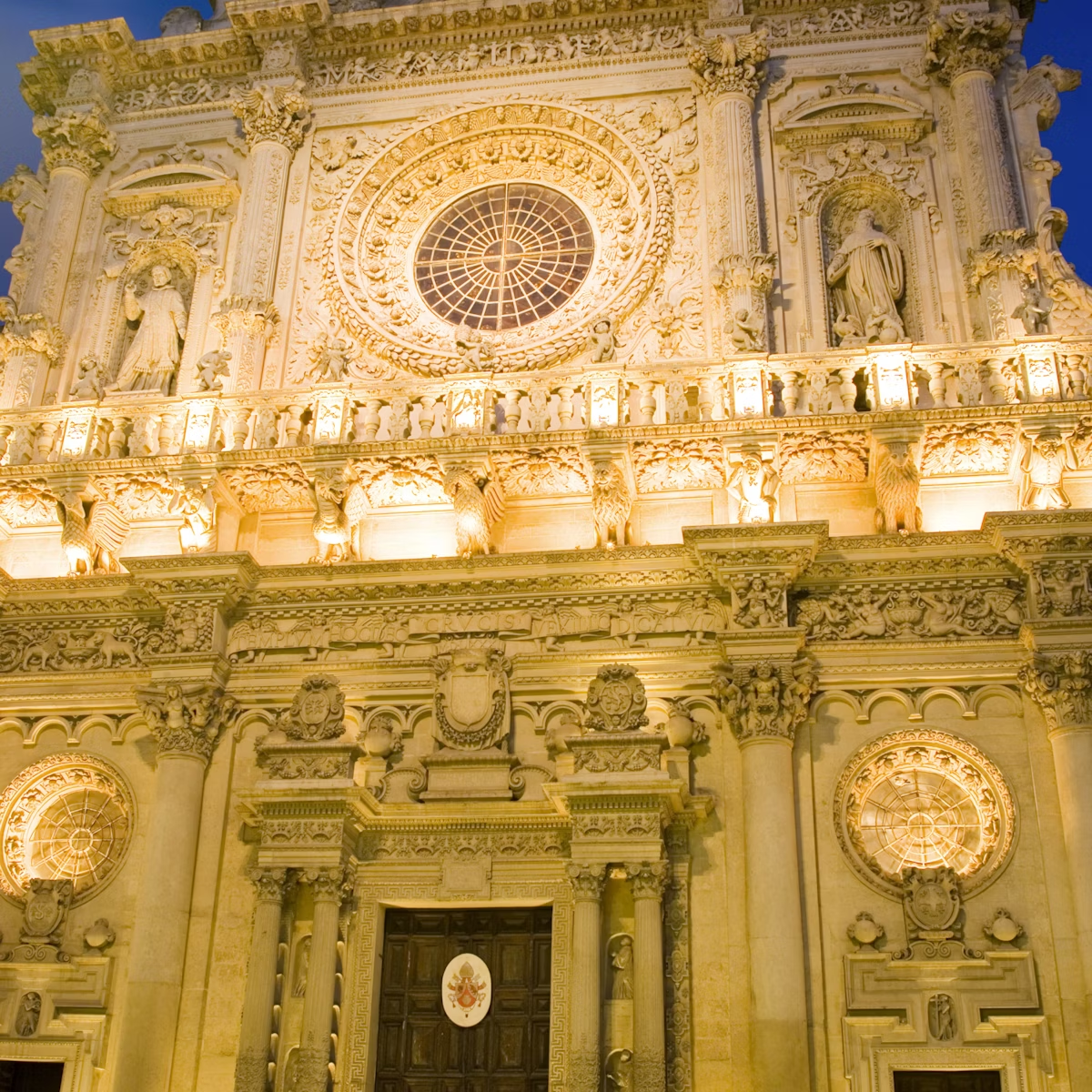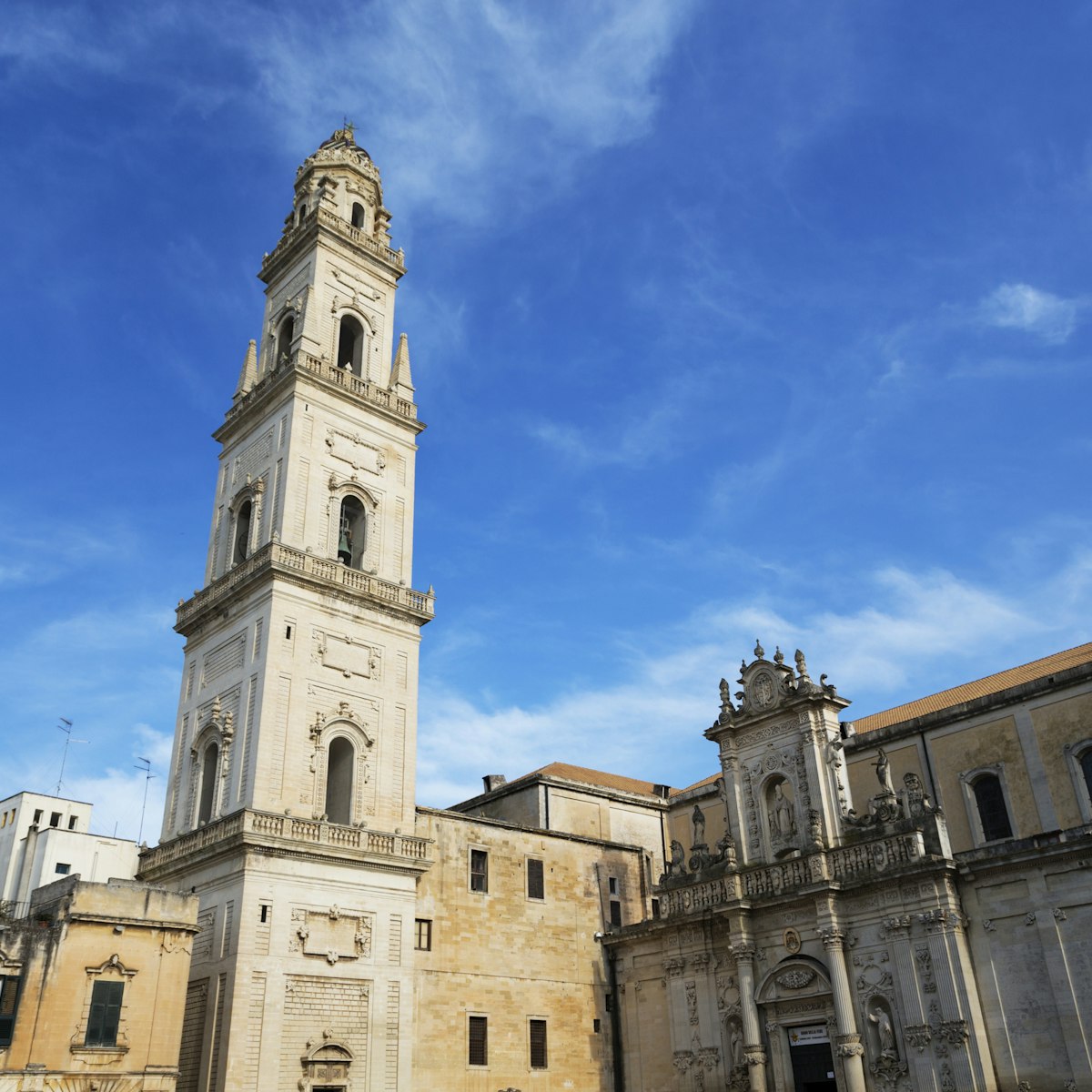Mosaics, skulls, crypts and biblical-meets-tropical imagery: Otranto's cathedral is like no other in Italy. It was built by the Normans in the 11th century, incorporating Romanesque, Byzantine and early Christian styles with their own, and has been given a few facelifts since. Covering the entire floor is its pièce de résistance, a vast 12th-century mosaic of a stupendous tree of life balanced on the back of two elephants.
The mosaic was created by a young monk called Pantaleone in 1165, whose vision of heaven and hell encompassed an amazing (con)fusion of the classics, religion and plain old superstition, including Adam and Eve, Diana the huntress, Hercules, King Arthur, Alexander the Great, and a menagerie of monkeys, snakes and sea monsters.
Beguiled by the well-preserved floor, most people forget to look up at the beautiful wooden coffered ceiling.
The beauty of the floor contrasts sharply with the ghoulishly fascinating Cappella Mortiri (Chapel of the Dead), where the bones and skulls of 813 Otranto martyrs beheaded by the invading Turks in 1480 peer out of seven tall glass cases. The stone upon which the grisly deed was allegedly carried out is preserved behind the altar.
If the bones haven't freaked you out, the church also has a dungeon-like crypt to explore.



